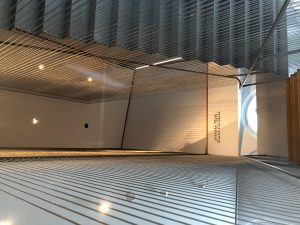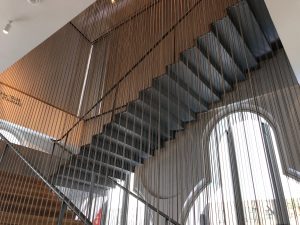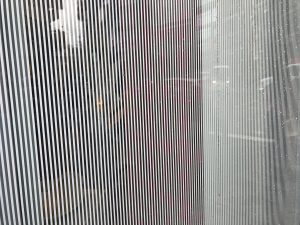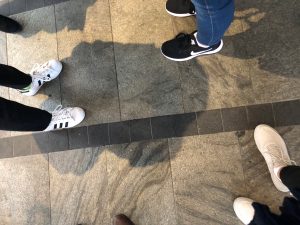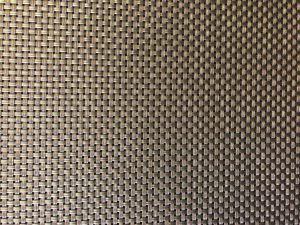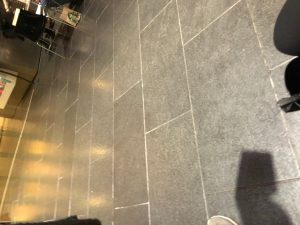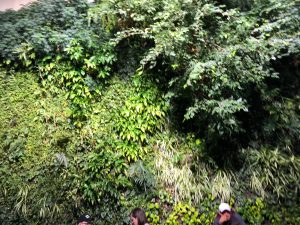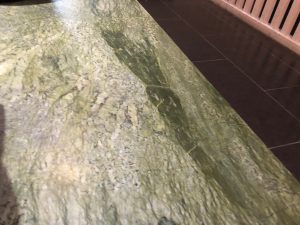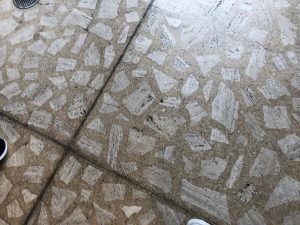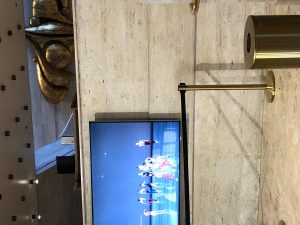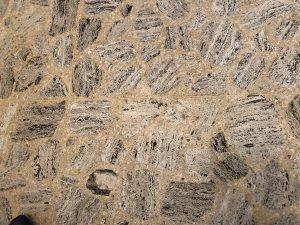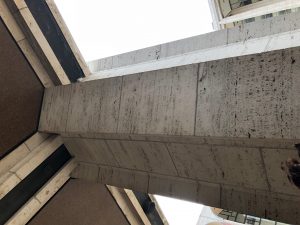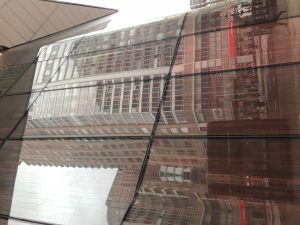MUSEUM OF ART AND DESIGN
PRIMARY MATERIALS
- Concrete
- Glass
- Granite
- Wood
- Steel
- Terracotta (exterior tiles made from local craft artist)
APPLICATION OF MATERIALS
- The wood and steel are used for the staircase. The treads and risers are in wood and is suspended by steel cables from the bottom to the top.
- Curtain wall, which is a structural pleading system usually involving glass, it is self supporting and connects to the building structure. There are three types of glass used for the exterior of the building, a transparent glazing fritted glass, printed pattern silk screen glass, and a translucent glass.
MATERIALITY
The original structure of the building was built in the 60s, although it went through a renovation in the 90s but still kept some of the original structure. The different types of glass mitigate light different and its interesting to see on the coarse granite flooring. The outside of the museum looks like an object whereas the inside shows the remnants of the old building. The interior and exterior of the museum have very different experiences.
DAVID RUBENSTEIN ATRIUM
PRIMARY MATERIALS
1. Greenery (plants)
2. Stone
3. Metal threads
4. Fibers
APPLICATION OF MATERIALS
- The woven metal threads cover the wall across from the greenery and next to the entrance/exit. It acts as an acoustic panel that mitigates sound absorption
- The stone is used for the flooring, and has a cleft finish. It is also used for a large marble bench in a honed finish, and as tiling on the wall.
MATERIALITY
The space uses very natural materials and allows for a lot of natural light to enter. The moment you enter the green wall is a pop of color that really defines the space. As you move further in, the fiber art covering an entire wall also creates a dialogue between it and the ceiling skylights. The green wall, the woven metal wall, and the water feature all help to create an acoustically comfortable space.
LINCOLN CENTER
PRIMARY MATERIALS
- Fritted glass
- Limestone
- Terrazzo and Concrete
- Metal (brass)
APPLICATION OF MATERIALS
- The limestone is used for the exterior and the building and the floor, it is a dominant material in this space.
- Yellow brass is used for the decorative elements of the space— the doorframe, handrails, light fixtures, control joints, etc.
MATERIALITY
The most interesting element of this space is the concrete and terrazzo flooring. One tile is made of chunks of terrazzo, in small and big, floating around a seat of concrete. This immediately grabs my eye as you can see the layers and air pockets inside the stone, not only on the floor, but on the interior walls as well. The use of limestone and brass for decorative elements makes this space feel very balanced.
ALICE TULLY HALL
PRIMARY MATERIALS
- Wood
- Metal cable
- Silicone
- Glass
APPLICATION OF MATERIALS
- The curtain wall is made of vertical wood panels
- The suspended cable structure is supporting the glass wall on the exterior
MATERIALITY
Since we were not able to go in due to an event, the most interesting element was the wood curtain wall and how it was applied from the exterior wall into the interior to define some of the functional spaces inside

